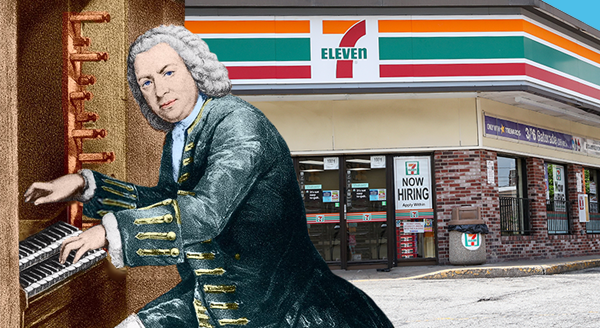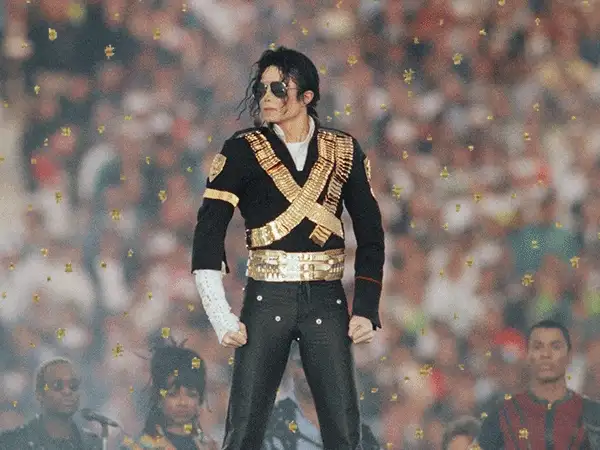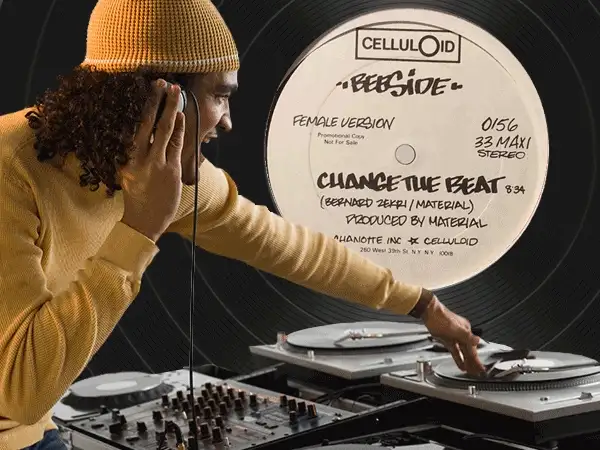Been into a store in the last year? Chances are, Mood Media has told you how to feel.

The first thing Jaime Bettencourt did last Friday morning was put on the new Taylor Swift album.
That might not seem unusual — hers was one of 300m streams that day on Spotify alone — but for Bettencourt, an album release is never just about the music.
As she swept through each Tortured Poets Department track, she found herself thinking about her clients. Who would be a fit for these songs? Where could she imagine them playing? What kind of brand would be a match for the ethereal, melancholic sound?
Bettencourt is senior vice president of global account management and marketing for Mood Media, the biggest company you’ve never heard of. If Chanel or Foot Locker or Krispy Kreme were Taylor Swift, Mood would be the Jack Antonoff behind their retail locations.
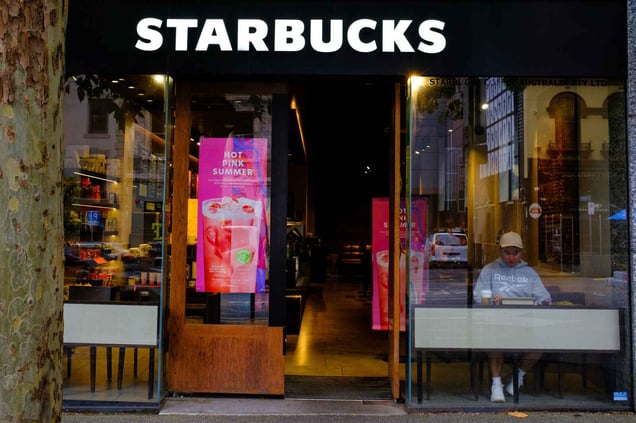
Mood works with companies like Starbucks to determine the alchemy that keeps customers coming back. (Alexi Rosenfeld/Getty Images)
Mood Media works on all things vibe — a store’s soundtrack, scents, and signage — to capture a brand’s personality through the senses. They’re the global leader in a field known as retail atmospherics. And they’re behind most of the stores you visit every day.
Mood Media reaches 165m people every day through 500k store locations around the world, a huge share of the world’s 3.5B total consumers. They’ve puffed the scent of campfire smoke through Yeti, and helped Ferrari customers design their own vehicles via tablet.
“It’s really about how we are helping to shape perceptions and activate behaviors, and then drive business results for our clients,” Bettencourt says.
“What we ultimately want to do is help brands create that emotional connection and drive loyalty. It’s about feeling good.”
In short, emotion matters. And Mood has become a master at the upswing, through a little art, a little science, and a lot of acquisition.
Elevator music
To understand Mood, you first need to understand Muzak. And to do that, you need to know about elevator music.
Back in the 1920s, George O. Squier, the U.S. Army’s chief signal officer during World War I, made a discovery. He realized he could transmit signals across electrical wires, no radio necessary.
Originally, the idea was to play music to the average citizen that way but the radio soon eclipsed Squier’s tech. In 1934, he created a company to focus on servicing commercial clients like hotels, restaurants and — you guessed it — elevators, where nervous riders were eager for some soothing ambience. Muzak — a portmanteau of music and Kodak — was born.
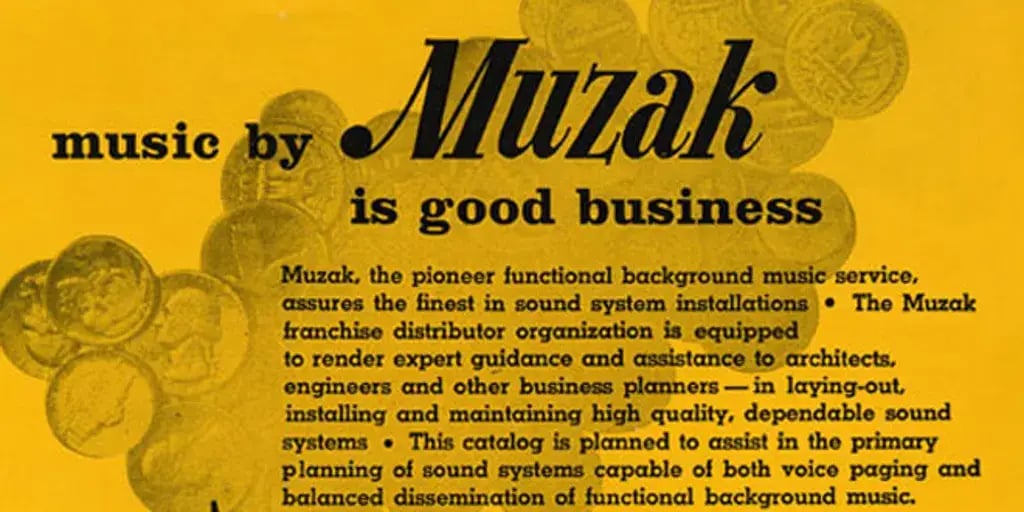
An early ad for Muzak. (Mood Media)
In the 1950s, Muzak announced its music could improve workplace productivity, and released its Stimulus Progression, music programmed to rev up the heartbeats of the office workers who’d be listening to it. The melodies started at a slower lilt than the average 72 heartbeats per minute before rising to a crescendo with some bigger brass sounds and then after 15 minutes offering a break.
“We consider Music by Muzak a definite part of the modern office. It goes naturally with good lighting, soft colors and intelligent layout,” read one 1965 testimonial from the National Gypsum Co. “After the installation of Muzak, our best estimates show that efficiency increased 5%.”
Even the astronauts on Apollo 11 piped Muzak through the spaceship to calm their nerves.
A Muzak ad advocates for the purchasing power of music. (Mood Media)
By the ’70s, one of Muzak’s rivals would change the audio landscape forever. Yesco, in a bid to appeal to young boomers, decided to license and distribute hits shoppers already knew and loved. The pop songs encroached on and eventually replaced Muzak’s watered-down orchestral takes.
The Hustle
The two companies merged, and Billboard magazine would later write that Yesco’s foregrounding of “foreground” music led to Muzak transforming from “passé elevator music specialist to dynamic, multi-faceted communications company.”
Around the same time, renowned “king of marketing” professor Philip Kotler coined the term “retail atmospherics.” Academic research was beginning to back up what marketers had known anecdotally for years: Our environment can change how humans (i.e., consumers) behave in it.
Studies over the last 40 years have shown that music makes people stay longer, eat more, and drink more wine at bars and restaurants. It enhances people’s desire to participate and customers’ desire to build connections with staff. A cohesive theme in a store will sell more merchandise than a store that doesn’t tell a story.
And forget background music: The dulcet, forgettable Muzak that defined the second half of the 20th century has been widely replaced by foreground music by popular artists. (When Bettencourt heard Beyoncé sing about Levi’s jeans on the new Cowboy Carter record, she thought, can Levi’s use that?)
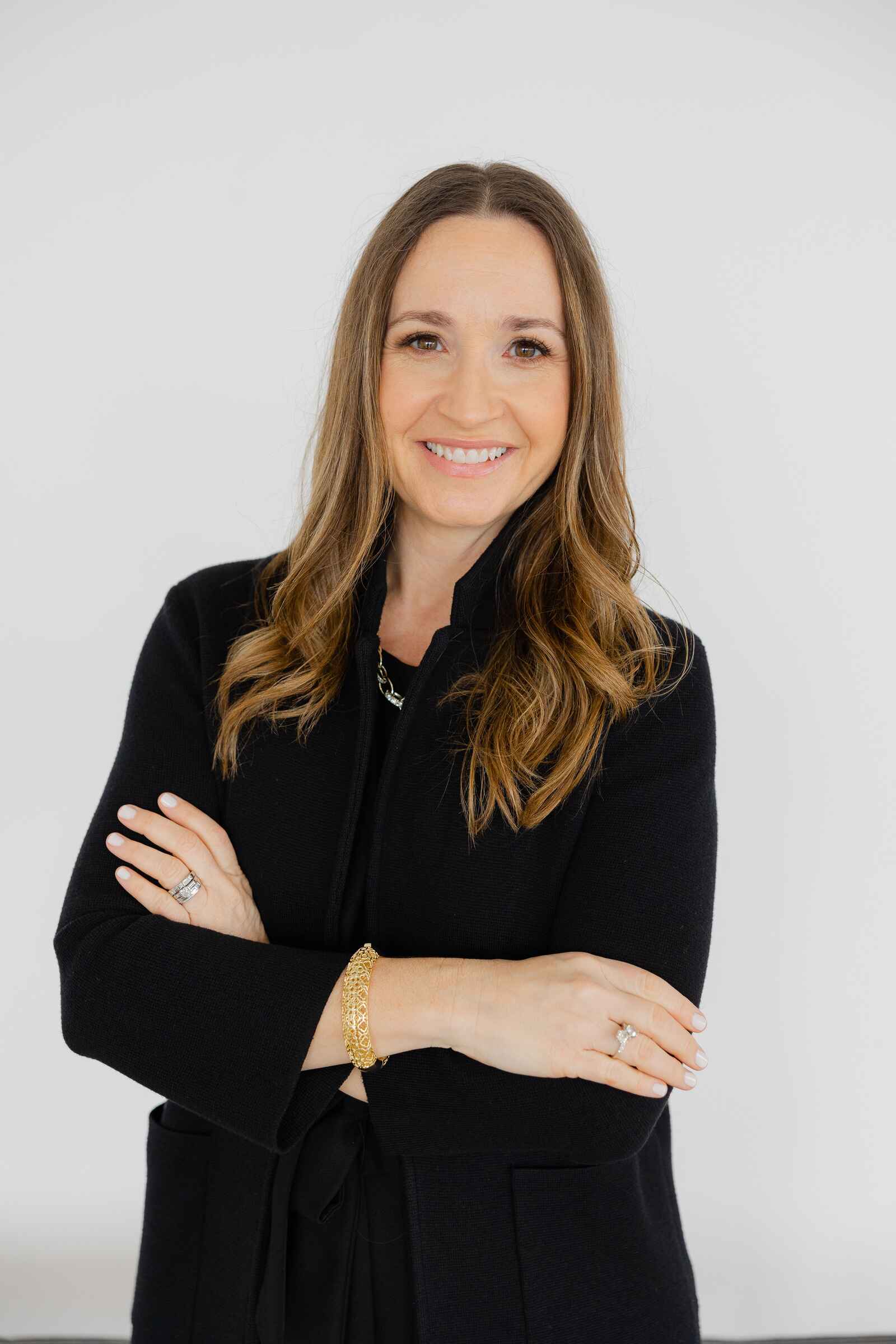
Mood’s SVP Jaime Bettencourt can’t go into a store anymore without scanning its environment for pros and cons. (Mood Media)
In an attempt to gain any edge they possibly can, stores, restaurants, and gyms are getting louder. Abercrombie & Fitch plays music just under the legal limit for a commercial enterprise in which patrons don’t wear ear protection. Choices like those are in service of shaping a customer’s perception of the kind of wares they can expect to find inside (clothes for even the loudest of frat houses, perhaps).
Mood swings
Up in Canada in the early aughts, a company called Fluid Music Canada was emerging as the purveyor of low- or no-royalty music to 15k locations across North America. Riding the coattails of American Idol’s success, Fluid seized an opportunity.
As aspiring musicians uploaded their songs to American Idol Underground, a website that promised possible exposure in exchange for the $25 upload fee, they were also uploading away their rights. Fluid distributed those songs, plus the 3m others they bought from mp3.com. Five years in, the company was bringing in millions in revenue from businesses across the globe.
In 2010, Fluid acquired Mood Media, a company focused on signage and scent, for a reported $206m. Fluid decamped to the States and rebranded as Mood Media.
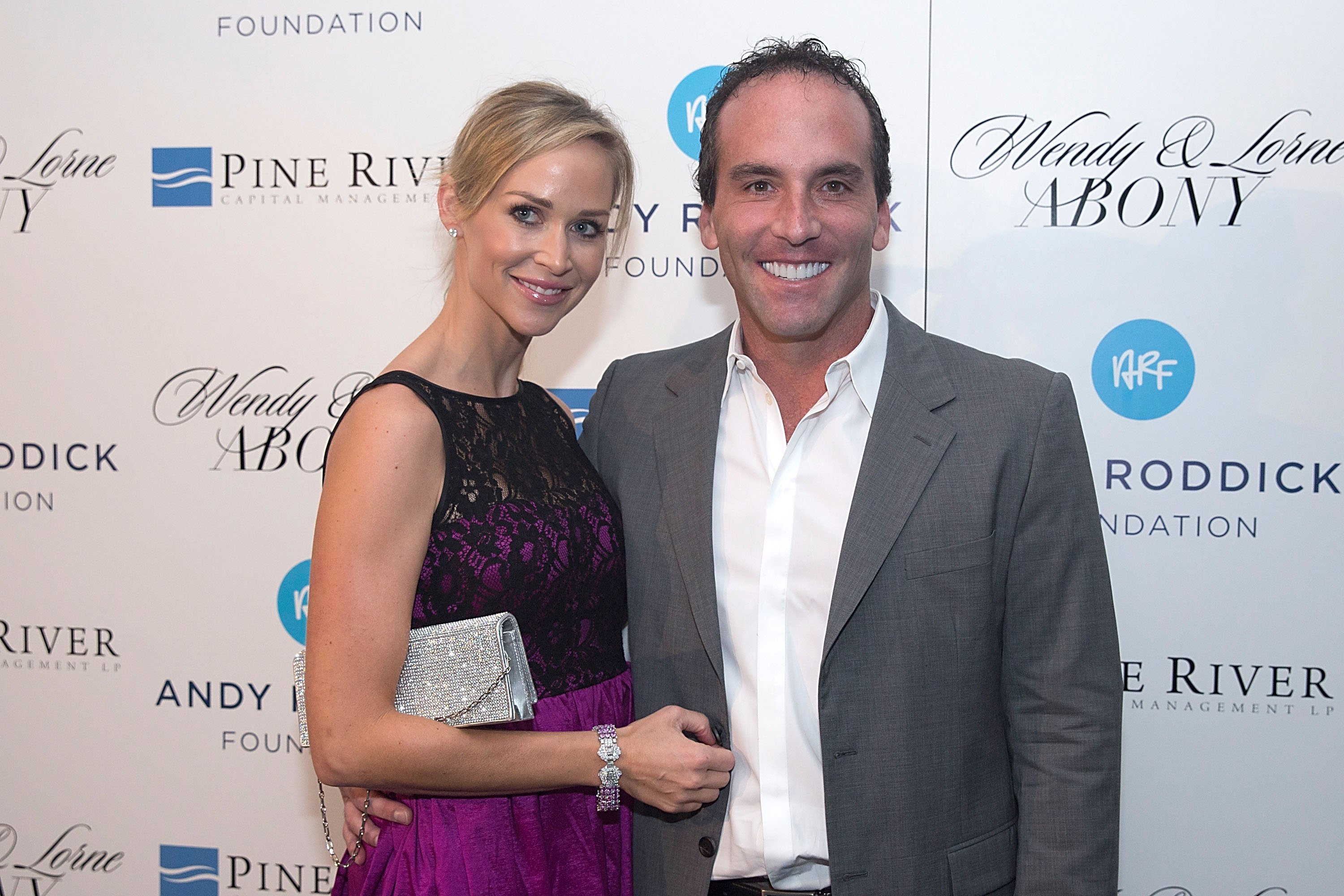
Fluid Music founder and former CEO of Mood Media Lorne Abony called the low- or no-royalty model “the secret sauce” that fueled his company’s growth. (Rick Kern/WireImage)
Since then, Mood has continued its path to acquisition domination, buying its way to becoming the global leader of everything your eyes, ears, and nose consume when they walk into a store.
In 2011, Mood acquired Muzak in a deal reportedly worth $345m, boosting their total music library to 1.7m tracks.
The next year, Mood bought the agencies that handled visuals for Abercrombie & Fitch, Burberry, and McDonald’s.
The Hustle
In 2018, they bought Focus Four, a company that specialized in digital signage like drive-thru menus. And last year, Mood bought Vibenomics, a startup audio in-store ad network, to help optimize (read: monetize) the hundreds of thousands of screens already in place in stores across the globe.
The audio architects
For every client, Mood starts by creating a profile through a robust discovery process. Think a personality quiz, but way, way more nuanced.
From there, Mood’s staff of world-class DJs, music PhDs, and music designers develops curated (and ad-free) playlists. They analyze lyrics and tempo, and consider innuendo and image, to develop a brand’s audio persona.
It’s different from a Spotify playlist for two reasons. One, it’s legal to play in a store. And two, it’s crafted with human expertise taking everything from the mindset of your customer to the color palette of your walls and floors into account.
If a brand wants a unique smell, they can create one from the 2.4k scents in Mood’s library. (Even that can be monetized: Some hotels sell candles with their proprietary fragrance, for customers who don’t want to have to leave the memories behind.)
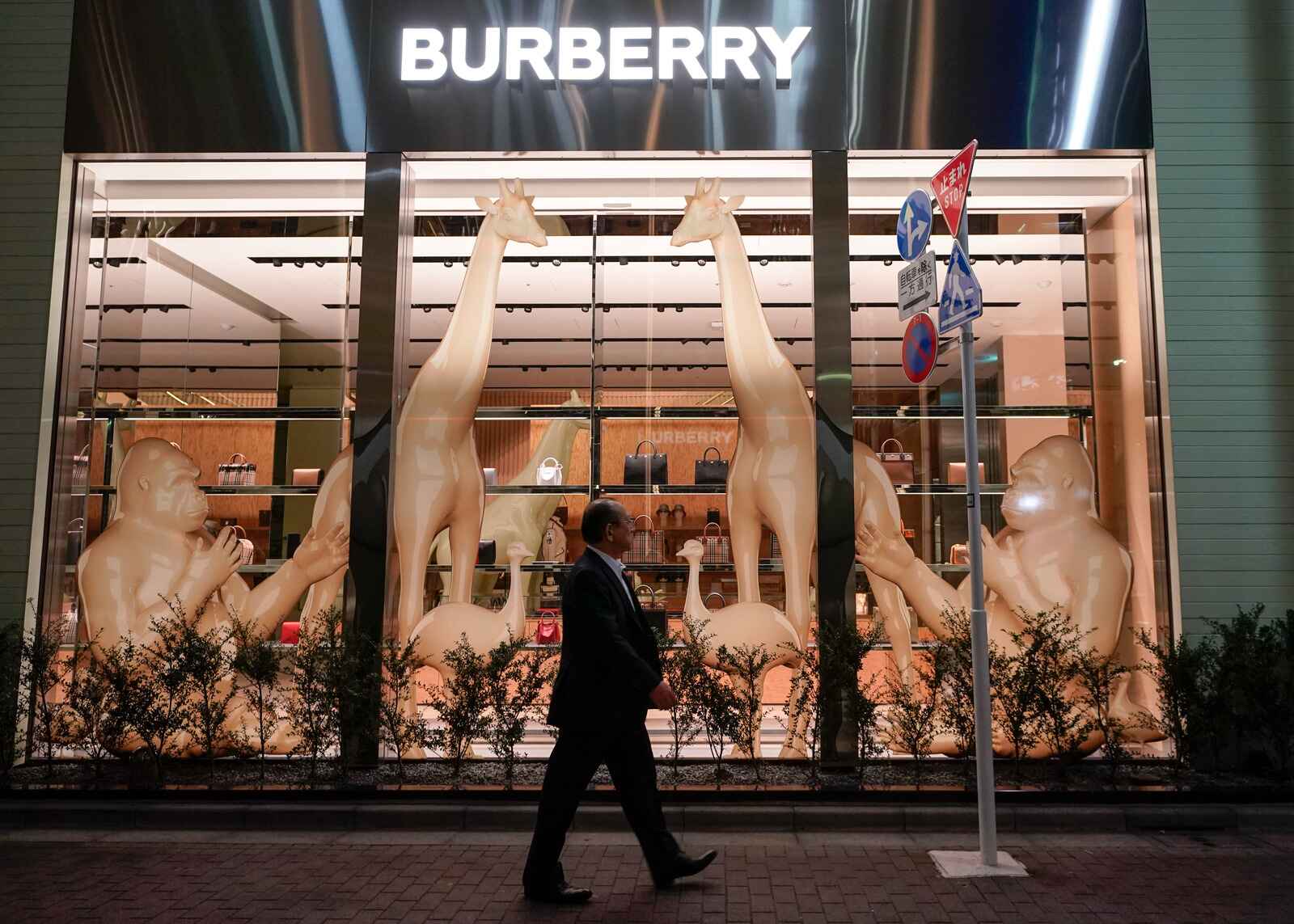
Sculpted animals loom large in the windows of Burberry, one of the luxury brands Mood partners with. (Christopher Jue/Getty Images)
Mood will also create content, from narratives to QR codes to drive-thru menus, with a department of expert animators to propel customers deeper into a store and a brand. Even the language they use to describe customers’ behavior — “dwell time” and “footfall” — sounds focus-tested.
They work to understand who their customers are and what they’re trying to accomplish, and drill down into details as specific as where to mount an informational screen and where to position a store’s speakers.
Mood’s own research monitors customers’ skin response and eye movements to determine what’s working:
- Consumers experienced a 40% uptick in mood when a store used scent to create an atmosphere
- Scent has led shoppers to underestimate actual shopping time by 26% when exposed to fragrances
- Shoppers paid 5% more attention to content when it was animated vs. static
- And customers were 17% more emotionally sensitive — in a negative way — when the store they shopped in was dead silent
Most of all, customers want an experience they can’t get from a website when they walk into a store IRL.
The Hustle
“I think it’s really just about community. Why am I drawn back?” Bettencourt says. “I think it’s really fun right now that brands are offering something in the store that you can do, it’s hands-on. Teach me something, create something. Personalization moments. Those are the ones I think are the most fun.”
But for every brand, the nuance and recommendations and engineering all come down to one question: “How do they want people to feel?”
💸💸💸
Last night, I went to the mall for the first time in months. I needed to return a sweater, and grimaced when I walked into Aritzia, house music thumping through my chest.
Walking back to the parking lot, I passed a bustling Sephora. The digital screens shone with new arrivals and how-to guides, the ring lights at the vanity counters emitted the perfect cheekbone-lifting glow.
The store felt deliciously tactile in a way I’d never really appreciated before. I smeared liquid blush on my cheeks, dabbed on a dramatic shade of lip gloss. The experience gave me the sensation of being a child, casting about for a new toy she might like. The music was bouncy, and so was the vibe.
I walked out feeling a little bit lighter — and not just because I’d left $70 behind.
Music


